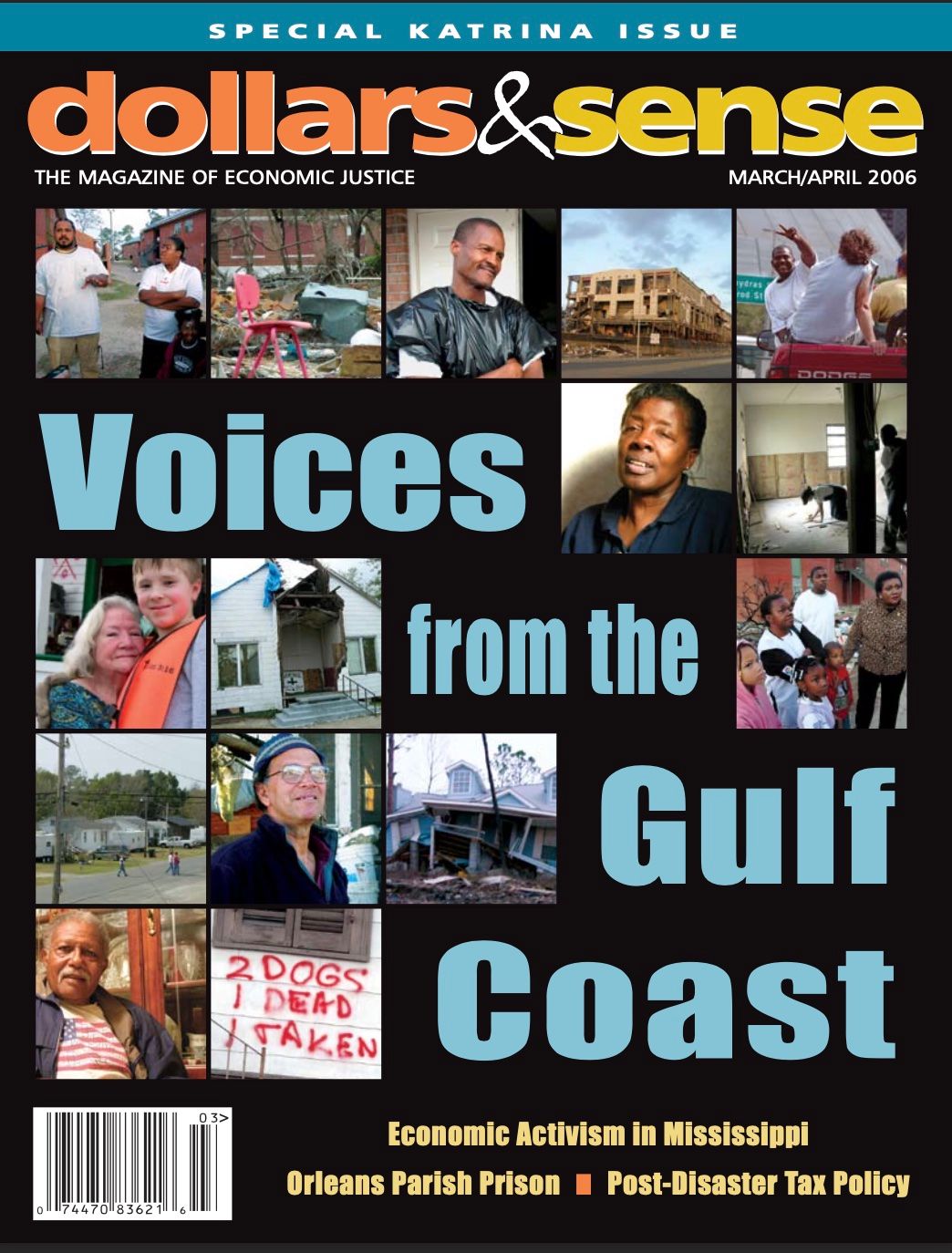This is BEN GREENBERG's portfolio site.
Contact Archives Search Feed Blog🔗 About ↑This is BEN GREENBERG's portfolio site.
Contact Archives Search Feed Blog🔗 About ↑This excerpt from my article “Gone to Mississippi” was originally published in the Dollars & Sense Special Katrina Issue, for which I served as guest editor.
 Cover of the Dollars & Sense Special Katrina Issue
Cover of the Dollars & Sense Special Katrina Issue
“You have to come here… you just can’t understand unless you see it… please come,” Gayle Tart said to me. Kermit Moore, an organizer from the Mississippi Workers’ Center for Human Rights, had referred me to Tart, an African-American attorney in Gulfport, for a perspective on Hurricane Katrina’s impact in Mississippi.
Her urgency was persuasive. In late January, after I had traveled around the Gulf Coast region for a week, I met Tart in a private home in Gulfport. “Now we can talk,” she said. “Until you saw what I saw, I couldn’t talk to you. You had no way of understanding.”
Tart was right.
Two things I could not understand from where I sat in Boston were the true extent of Katrina’s geographic reach in Mississippi, Louisiana, and Alabama—wiping out an entire region of the country—and the scale of human costs, compounded by government policies, local, state, and federal.
Even before the trip, I knew something wasn’t right about the media’s coverage of Mississippi. I heard entire towns were wiped out, but I didn’t hear anything about African American communities, even though Mississippi has the highest concentration of African Americans in the United States. Even along the Gulf Coast, one of the whitest parts of the state, there are many heavily African-American areas. For instance, Gulfport, the second largest city in the state, is one-third African American; parts of the city are over 90% African American. But Katrina’s impact on African-American communities on the Mississippi coast was virtually absent from the news.
On October 11, Mississippi Gov. Haley Barbour announced the formation of his Commission on Recovery, Rebuilding and Renewal. “The Coast and South Mississippi will decide their own destiny,” Barbour said, “but with strong support from the Commission, our Congressional delegation, state officials and many others.”
But whom, exactly, will government support? “It took some seven weeks after that commission was convened to even have a committee on housing, even though housing was the main thing the goddamn storm knocked out,” noted Derrick Evans, founder and director of Turkey Creek Community Initiatives, an innovative nonprofit community development corporation in the historic African-American settlement, now part of Gulfport. “They quickly fast-tracked legislation to allow the casinos to be rebuilt on land so that the casino companies and operators wouldn’t abandon the Gulf Coast. An opportunity was missed to also require those folks, when they rebuild, to pay into an affordable housing trust fund, like the hotels do in Boston.”
To travel through the Gulf Coast region is to move through a twilight zone where thousands of people are in limbo, with no sense of their future. In contrast to the damage Katrina brought in New Orleans, the storm was largely color-blind in its immediate destruction of Mississippi. Like New Orleans, however, there are racial and economic dimensions to everything in the aftermath—from the availability of resources for relief and cleanup to reconstruction plans.
Read the full article and the rest of the Special Katrina Issue at Dollars & Sense